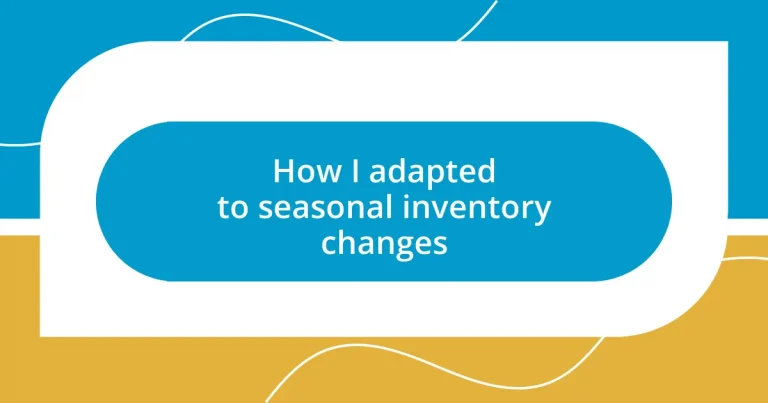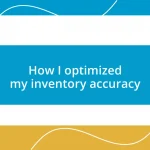Key takeaways:
- Understanding seasonal inventory involves predicting customer needs based on emotional connections, cultural shifts, and environmental factors.
- Effective demand forecasting combines historical sales data, customer engagement, and predictive analytics to align inventory with market trends.
- Managing inventory requires flexibility, proactive strategies like just-in-time systems, and collaboration with suppliers to adapt to changing demands.
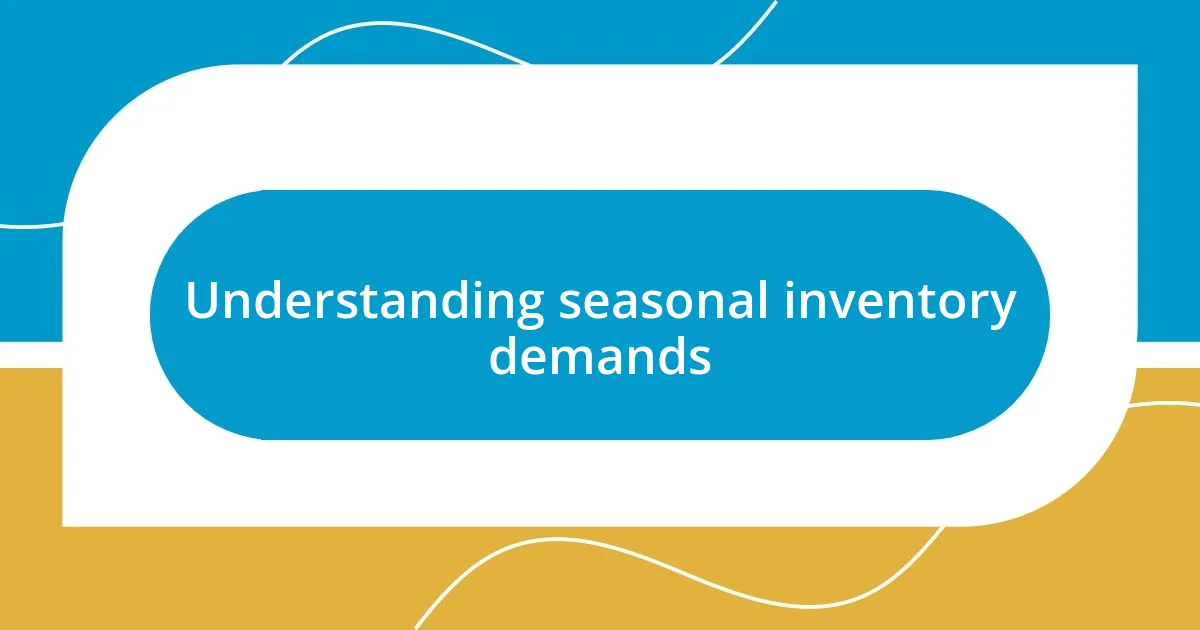
Understanding seasonal inventory demands
Understanding seasonal inventory demands can feel like an intricate dance with the rhythm of consumer behavior. I remember my first winter season managing inventory; the shelves that were once full of summer goods were now almost barren, leaving me scrambling to meet the demand for wool sweaters and holiday decorations. It was a lesson in anticipation—how do we truly predict what customers will want as seasons change?
As I observed the ebb and flow of customer purchases, I began to realize that each season carries its own emotional weight. Think about it: during the festive months, shoppers are often driven by nostalgia and joy, seeking out products that resonate with their traditions. I often found myself pondering, what items should I prioritize that would evoke those warm fuzzy feelings in my customers? Understanding these emotional connections helped me tailor my inventory decisions effectively.
Additionally, I learned that seasonal trends are not just about the obvious changes like warmer or cooler weather; they also stem from cultural shifts and events. For example, a sudden rise in interest for sustainable products in the spring caught me by surprise. Adapting my inventory to include eco-friendly items not only met the demand but also aligned with a growing consumer consciousness. How often do we reevaluate our stock to align with these trends? It’s a constant balancing act that requires both intuition and data-driven insights.
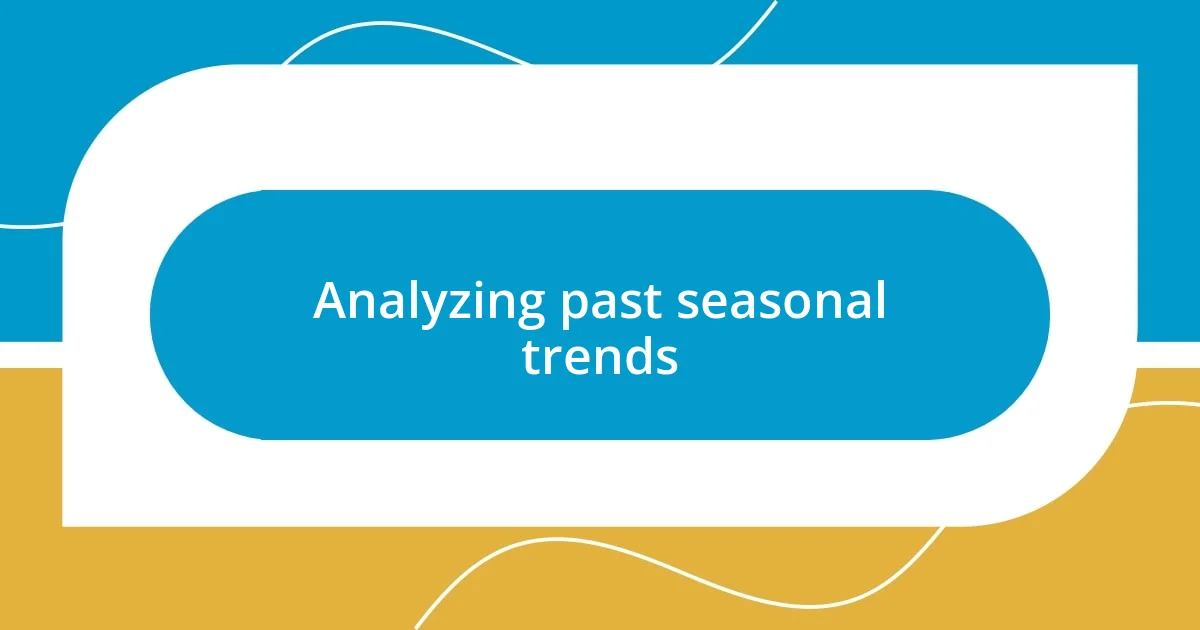
Analyzing past seasonal trends
When I began analyzing past seasonal trends, it struck me how often data revealed patterns that matched my instincts. I recall reviewing last year’s winter sales, where I noticed a notable spike in demand for warming products right after the first snowfall. It was eye-opening; I realized that my decisions based on instinct were indeed rooted in concrete evidence.
- Comparing quarterly sales figures helped illustrate these peaks clearly.
- Analyzing customer purchase behavior during major holidays provided insights into emotional buying patterns.
- I also tracked weather-related trends, such as increased interest in outdoor heaters during unseasonably chilly months.
By diving deep into historical data, I painted a clearer picture of what my customers craved, translating insights into actionable inventory strategies. Seeing the correlations emerge felt like piecing together a puzzle, providing clarity and direction.
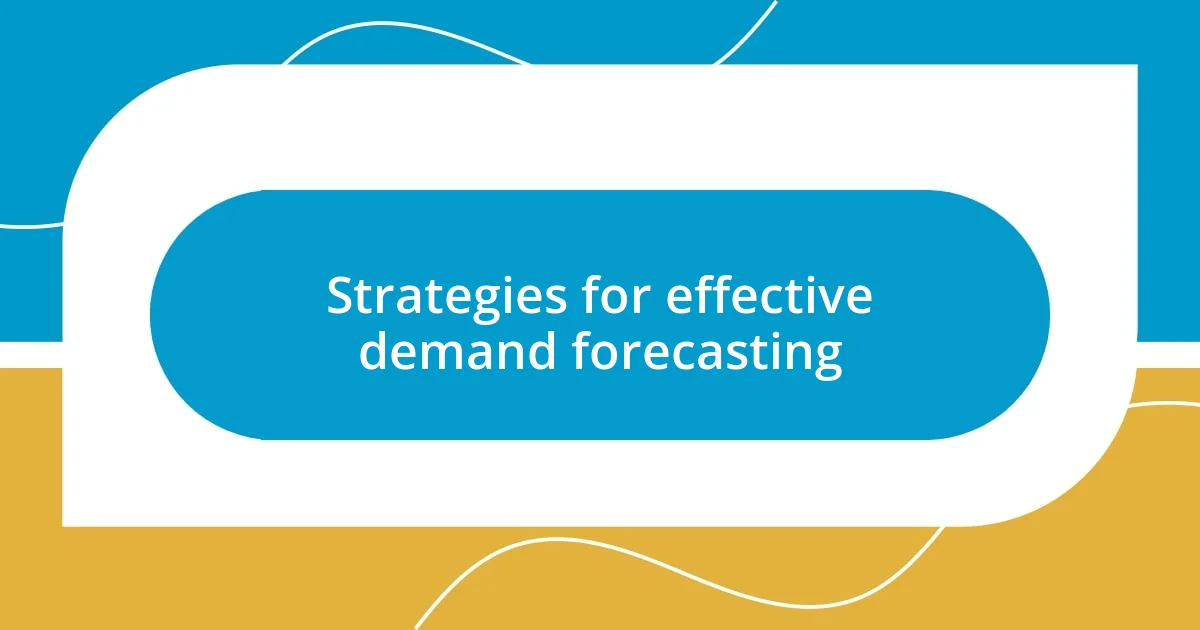
Strategies for effective demand forecasting
When it comes to demand forecasting, a combination of quantitative analysis and qualitative insights can produce remarkable results. I often blend historical sales data with current market trends to create a clearer forecast. For instance, I once noticed a steady increase in demand for fitness-related products during the New Year. By recognizing this trend, I tailored my inventory accordingly, ensuring that customers had what they wanted right when they sought it most.
In addition to data, directly engaging with customers through surveys or social media can provide valuable insights into their preferences. I remember launching a quick poll about seasonal items and was surprised to see how much it influenced my stocking decisions. The feedback allowed me to align my inventory with customer desires, making them feel heard and valued, which in turn, fostered loyalty.
Using tools like predictive analytics software has dramatically changed how I approach demand forecasting. This technology allows for simulations based on various factors, such as market conditions and consumer behavior shifts. By leveraging these analytical tools, I’ve been able to foresee fluctuations and prepare in advance, which has proven invaluable during peak seasons—like the rush before back-to-school sales, where anticipating demand made all the difference in the world.
| Strategy | Benefits |
|---|---|
| Historical Data Analysis | Reveals purchasing patterns over time, allowing for informed inventory decisions. |
| Customer Engagement | Builds relationships and helps align offerings with current consumer desires. |
| Predictive Analytics | Allows for proactive adjustments based on real-time market conditions. |
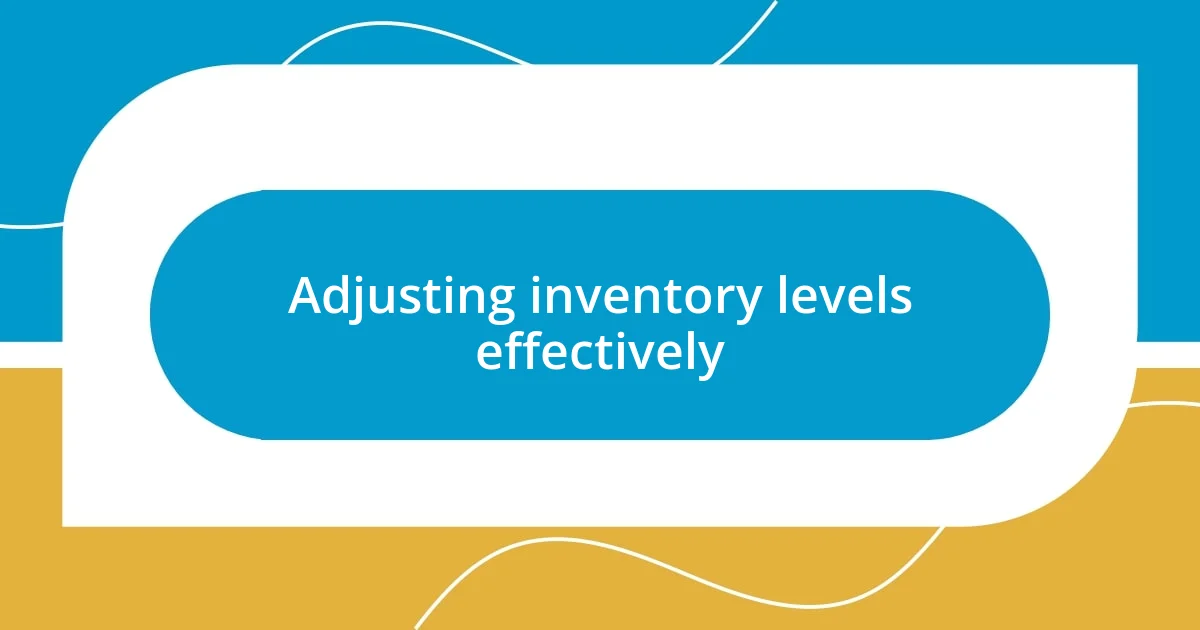
Adjusting inventory levels effectively
Adjusting inventory levels effectively is a balancing act that requires constant attention. I once found myself caught off guard during a particularly rainy spring when I had stocked up on gardening supplies, but my customers were clamoring for rain gear instead. That experience taught me to remain flexible; I learned the hard way that adaptability is crucial in managing inventory, especially when the weather—or customer habits—change unexpectedly.
One strategy I employed involved investing in a just-in-time (JIT) inventory system. By doing this, I could replenish stock as it sold rather than going all in upfront. I remember the rush of excitement when I received a shipment of outdoor umbrellas just as the sun finally decided to shine after weeks of clouds. The stock flew off the shelves, reinforcing my belief that timely adjustments can create significant advantages.
I’ve also embraced the concept of safety stock, which acts like a buffer against unforeseen demand spikes. During the last holiday season, I held an extra inventory of popular tech gadgets. When one of my suppliers faced delays, I was able to meet customer needs without missing a beat. I often wonder: isn’t it better to be proactive and prepared rather than reactive and scrambling? This proactive approach has empowered my business to navigate inventory challenges with confidence.
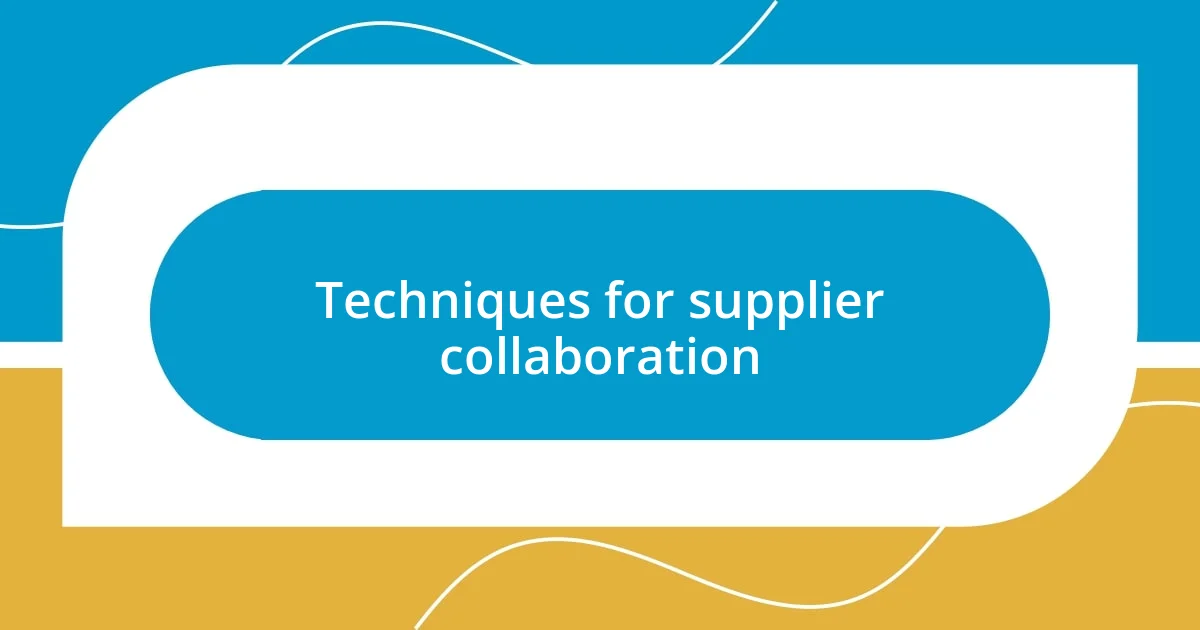
Techniques for supplier collaboration
Collaborating effectively with suppliers has been a game changer for me. One technique I found invaluable was establishing open lines of communication. I remember the time I had a heart-to-heart conversation with one of my suppliers about anticipated changes in consumer preferences. That dialogue led to my supplier giving me a heads-up about a potential delay in their shipment, allowing me to adjust my strategy before it affected my inventory levels. Isn’t it amazing how a simple conversation can make such a big difference?
Another approach I’ve taken involves integrating collaborative planning software. I still recall the excitement I felt when implementing these tools; it felt like I was finally breaking down the silos between my business and my suppliers. By sharing sales forecasts and inventory data, both parties can make informed decisions. It’s like a dance—working together in harmony to ensure product availability while minimizing excess stock. How often do we get to synchronize our efforts like this?
I also advocate for supplier performance reviews as part of the collaboration. I once sat down with my supplier to discuss their delivery timelines and quality metrics. This open discussion not only strengthened our relationship but also led to improved service on their end. Have you ever thought about how constructive feedback can lead to mutual growth? Embracing this kind of transparency can build trust and foster stronger partnerships, which ultimately benefits our customers and businesses alike.
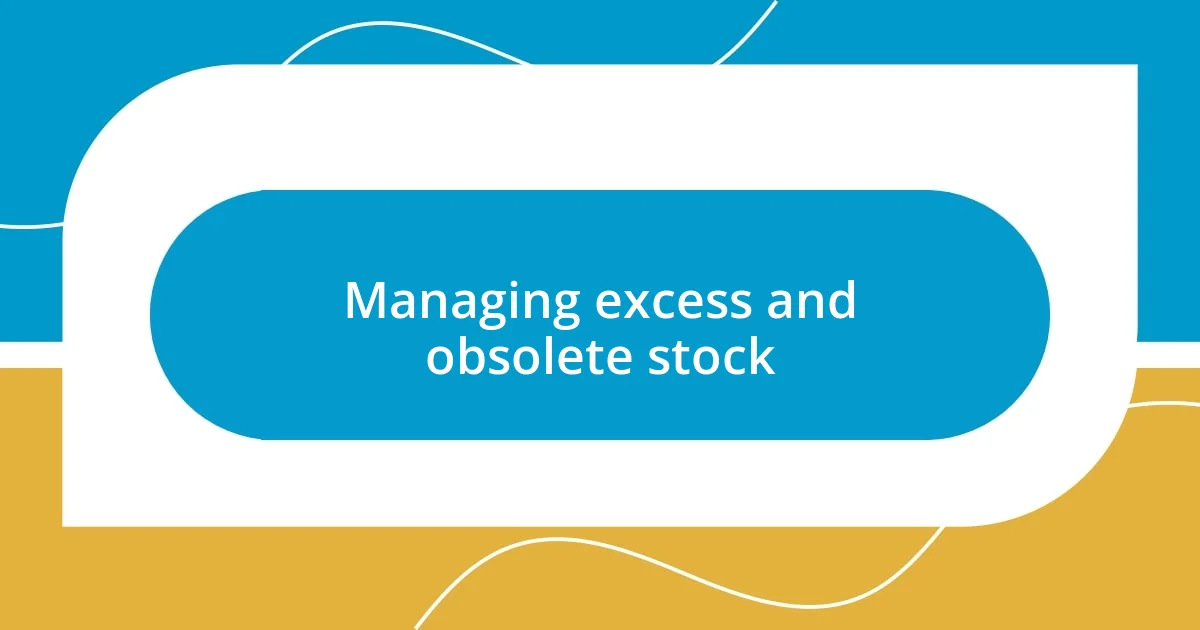
Managing excess and obsolete stock
Managing excess and obsolete stock requires a strategic mindset. I once dealt with an entire warehouse of seasonal decorations that just didn’t sell as expected. The sinking feeling of knowing I had miscalculated customer demand was tough. So, I took the initiative to host a clearance sale. It was a great lesson in turning a potential loss into an opportunity by finding creative ways to realign my inventory with customer interests.
One method that proved effective was leveraging data analytics for demand forecasting. After my clearance sale, I started analyzing past sales trends and seasonality more closely. I can remember how relieved I felt when I discovered a pattern that helped me predict my customers’ needs accurately. It’s fascinating how numbers can guide us in making smarter inventory decisions. Have you ever wished you could see into the future of your sales? Reliable data becomes like a crystal ball in those instances.
Additionally, I found donating excess stock to local charities transformed my surplus into goodwill. The first time I packed up boxes of unused items, I was struck by a sense of purpose. Not only did I clear valuable space in my inventory, but I also strengthened my brand’s community ties. Isn’t it incredible how helping others can give our businesses a renewed sense of direction? This approach not only helps others but can also foster positive relationships, creating a win-win situation for everyone involved.
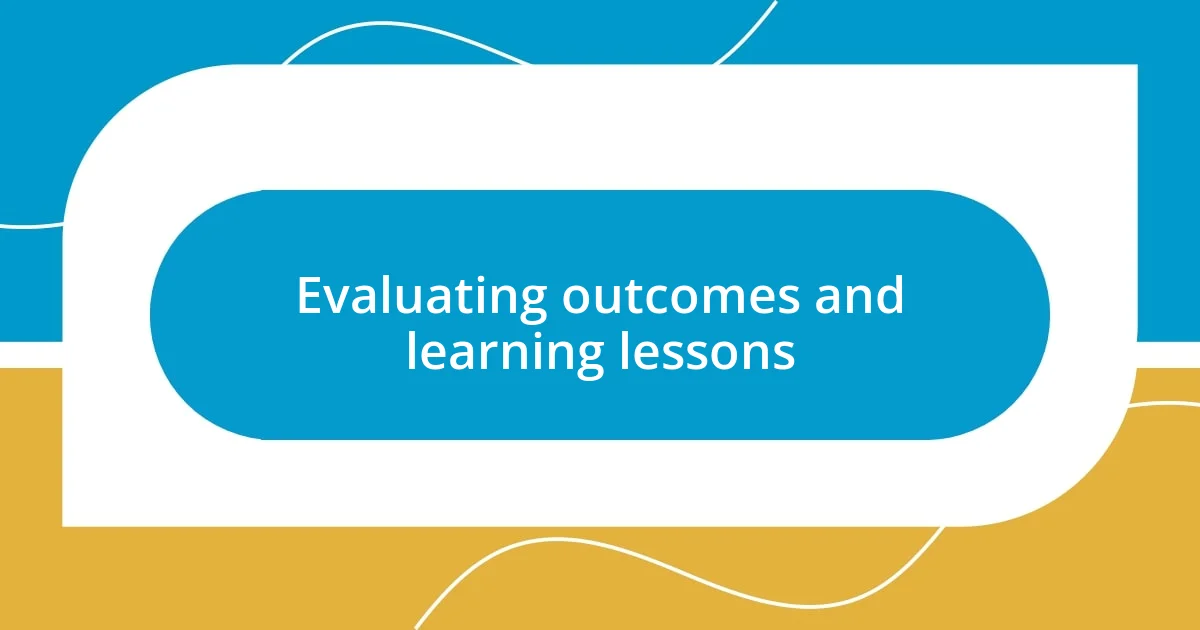
Evaluating outcomes and learning lessons
Evaluating the outcomes of my inventory strategies has been both enlightening and essential. After each season, I meticulously review sales data to see what worked and what didn’t. For instance, I remember the dismay I felt after analyzing disappointing winter sales—it spurred me to make real changes rather than repeat mistakes. Isn’t it amazing how reflecting on past outcomes can illuminate the path forward?
I often find myself pondering how real-world feedback shapes our inventory choices. After implementing a new strategy to manage seasonal shifts, I was surprised by the positive response from customers who appreciated the timely availability of seasonal items. It struck me: when we align our offerings with consumer needs, we foster loyalty. How often do we recognize the connection between adaptability and customer satisfaction?
One of my biggest lessons came from a particularly challenging holiday season. Despite my best efforts, I overstocked on items that clearly weren’t resonating with shoppers. That experience was painful but also transformative. I learned to be more attuned to market cues and embrace flexibility. Have you ever experienced a setback that was difficult in the moment but became your best teacher? Such moments are invaluable, showing us that evaluation is not just about assessing success but also about growing from our missteps.












